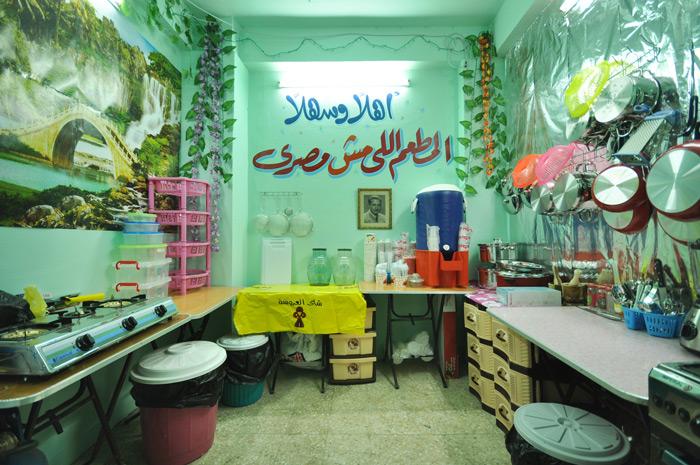
By BECAUSE
Asunción Molinos Gordo is an artist who has long been interested in issues relating to agriculture, rural work, and food sovereignty, and makes inventive projects that highlight them. Now living in Oman, she was based in Egypt for four years and in that time created two projects—the World Agricultural Museum (WAM) and El Matam el Mish Masry (The Non-Egyptian Restaurant)—both of which provided unique ways of presenting information, and public conversations, about Egypt’s food production and global food poverty.
The WAM was a full-scaled replica museum, housed in Downtown Cairo, made in the style of Cairo’s Agricultural Museum, but telling a very different story. Through specially made objects, vitrines, dioramas and display boards, the WAM mimicked the marketing messages of agribusiness giants such as Monsanto, while also providing information on the human consequences of agribusiness-led policy.
For El Matam el Mish Masry—which BECAUSE wrote about here—Molinos Gordo opened up a small, street-level restaurant in the ashwai’ya (informal neighborhood) of Ard El Lewa, as a means to serve up not just food but a discussion on what access local Egyptians have to their own produce. Ard El Lewa, like many ashwai‘yat, is built on what was previously fertile farmland. The twist came with the restaurant’s menu. Over the four weeks of the restaurant, Molinos Gordo presented four experimental menus: one, made from the high grade vegetables grown for international export; the second, from the vegetables that local families have access to. The third menu was made from whatever edible could be found growing nearby (i.e., not much: the result was an inedible mess). The last ‘menu’ was to put on display the results of a local excavation of the land, looking for any signs of past agricultural activity.
BECAUSE caught up with Molinos Gordo about these projects and the ideas behind them.
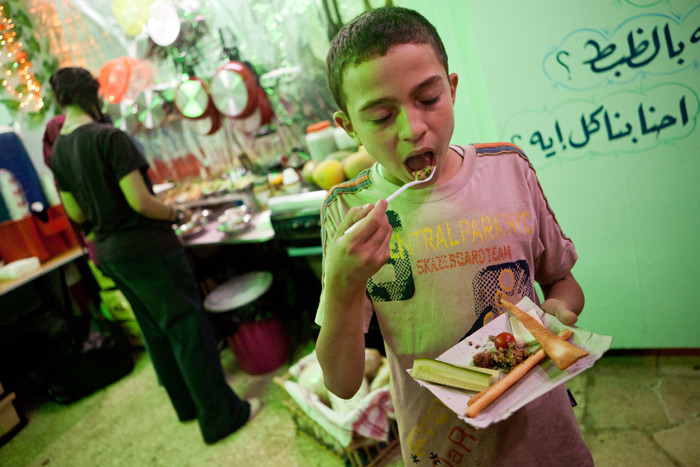
You have always been interested in contemporary rural people and agriculture. Why is this interesting to an artist?
The way I understand it, the impact of peasants and small farmers is as cultural agents and not merely as food producers. Their activities are important not only to secure the food supply, but also to keep alive extremely relevant forms of knowledge production.
Why do you use artistic projects to highlight these issues?
Art is a very versatile tool to work in the most diverse contexts, and has the potential to establish a genuine dialogue. But in order to tackle these issues broadly it needs to be in conjunction with other disciplines such is journalism, social sciences, politics, economics, etc.
Tell us how you were inspired to build WAM.
The main inspiration was the legacy of the real Agricultural Museum of Cairo. There’s not another museum like this one in the world, it is so multi-layered, not only in how outdated its display is but also in the way it is used by Cairenes. My visit to this museum made me wonder about what is the current food and agriculture situation in Egypt, which later on extended into a global view.
Why did you decide to make an alternative museum of your own?
We could think of museums as tools for cultural colonization. They often provide a channel for the display of information, free from questioning, but framed as ‘culture’ or ‘philanthropy.’ But also, people find them accessible. People in Cairo sometimes use the Agricultural Museum as a picnic spot for example. So, no matter what your interest is, everyone can find something for themselves in a museum.
What is the main difference between the Agricultural Museum and what you created with WAM?
Both are using the very similar visuals and aesthetics, both based on the ways that museums work. But the Agricultural Museum does it to convince the viewer, while WAM does it to get the viewer to question the information that is presented.
The Agricultural Museum gives you information about the agriculture of the past, but not a word about what is happening these days. So while it aims to brand the country as an agricultural power and to show the achievements of Egyptian agriculture, almost as a form of propaganda, WAM wants to reveal the inconsistency of the standard narrative on development through agriculture and food biotechnology.
Readers can take a virtual tour of the WAM here. Can you describe the experience of visiting WAM, and some key exhibits?
When a visitors enters WAM what they see is an old looking colonial museum, dusty, a bit messy … Some kind of time capsule. But as soon as they start reading through its signs, drawings and displays, they can recognize our present. All the data on display is from 2010 onward.
The main subject in the exhibition is the impact of biotechnology in food production, and the the main arguments used to convince the population that we ‘need’ genetically modified (GM) organisms to save world food supply. For example, in the first room of the museum you will find a sign panel saying “Produce More Food,” claiming that GM seeds will double yields to solve world hunger problems. But next to it on the floor, you see a smaller panel giving you information on how hunger in Argentina is a direct consequence of the introduction of GM crops like soy bean.
In this way, the museum is full of this contradictory data. In the second room, which displays the narratives on world hunger, you can find a sign saying “Overpopulation is a Cause of Hunger,” and the bottom of it you can find a graphic that shows you how we are producing food enough to feed a planet and a half.
In these ways, WAM tries to dismantle the most popular arguments used to promote what has been called the ‘second green revolution,’ which is all about increasing production, instead of optimizing the distribution of goods and facilitating access to food.
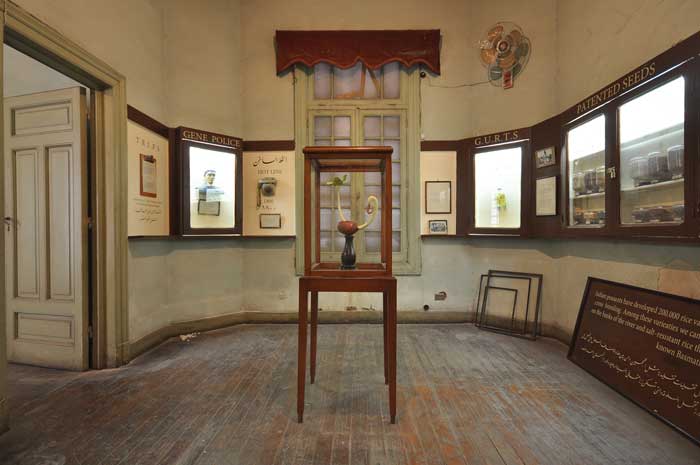
So the mainstream story emphasizes increased production instead of better distribution.
Yes. Basically, WAM pushes for the ideas behind food sovereignty instead of food security.
In what ways are those issues particularly impacting the MENA region?
Egypt like many other countries classified as ‘developing’ have been seduced into using GM technology as a step forward into progress, and not enough information about them is been shared among their population. That was one of the reasons to open WAM, as a way to open a discussion on the matter and provoke curiosity.
How did people respond to WAM?
We had over 1000 visitors, which is good for an art project considering that the exhibition opened three weeks before the 2011 revolution and closed 3 months after. It was definitely not the time to attend art shows. What was also important was the domino effect, how these visitors talked about it.
Let’s talk about El Matam el Mish Masry (The Non-Egyptian Restaurant) now. What inspired your interest to make this project?
The main reason to make this project was the lack of attention given to Egyptian agriculture and its status quo. Back in 2012 under Mohamed Morsi’s government, as today, the politics on food were rarely discussed, and even less the relevant trade agreements.
What is so urgent about the state of Egyptian agricultural export market? What relation does it have to ashwa’iyat like Ard El Lewa?
When you look at the quality of the food exports (high standards) and you look at what is been imported into the country (low standards) you really wonder why. How come a country can sell all its best products and can only afford the lowest food quality with the money it gets in return. What is urgent about these trade policies is how they really shape the citizens’ diets and their access to basic nutrients.
Ashwa’iyat like Ard El Lewa are built upon former agricultural land. Previously, this land was able to produce formidable food at low prices, but as the urban areas expand over farmland, Egypt becomes more dependent on imports.
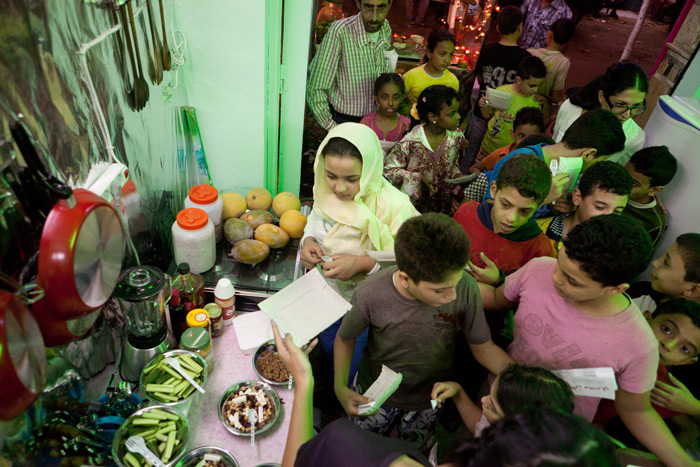
How does that relate to the global picture of food security, agribusiness and fairness of resource distribution?
Egypt has a very juicy market that until the mid-20th century was self-sustaining. Now, 80 million consumers need to be supplied with food and clothing. Free market policies are leaving the local producers at the mercy of volatile price changes and with little access to their own country’s market, while the global traders get the biggest chunks.
We can look at this picture through the lens of corporate colonialism. Today’s agribusinesses are presenting themselves as heroic figures under the promise of ensuring ‘food security,’ and what they are really doing is jeopardizing the markets of developing countries by dumping their food surpluses for less than the production costs.
The country is rapidly losing its food sovereignty; the original farmers are being dispossessed from their land and access to resources, their market niche is been narrowed, and the average consumer gets food of an inferior quality.
Why did you choose a restaurant as your artistic project? How did that work?
I wanted to use a medium that was familiar to the local public, something accessible for an audience that may not have a background on contemporary art. When thinking about the project my first question was: What’s successful in Ard El Lewa? Small businesses are! Coffee shops, hairdressers, grocery stores … a restaurant would allow me to engage with the people in a broader sense.
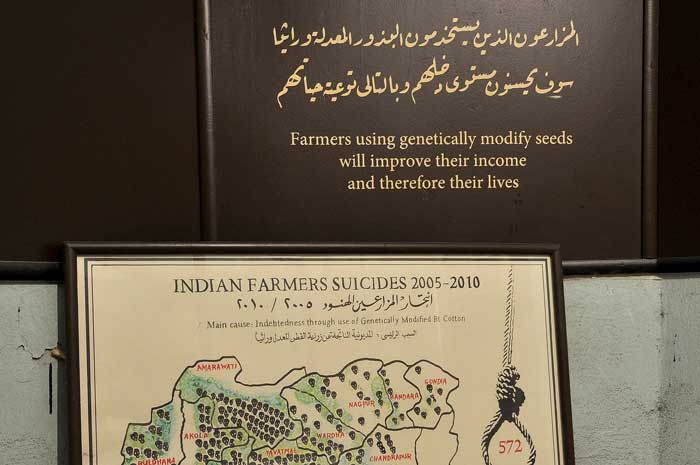
To what extent did you involve the local community?
Let’s say that the community involved itself. I only set the scenario.
The relation with the local community grew gradually; from the first week people approached the restaurant with curiosity and after a few days we had our ‘regular customers’ with whom we had a month long conversation. On the second week invited former residents of Ard el Lewa as cooks, Om Islam, Om Mohamed, Om Karim and Waefá. That was when real engagement started. They shared so many stories with us, such as how the neighbourhood changed, the daily struggle they go through to buy their groceries at a reasonable price, home-made hygiene measures to clean raw meat or poultry before cooking it … they even started this friendly competition with the regular customers to see who makes the best bitingan makhalel (pickled eggplant).
What result did this have? What reactions did you have?
The community was challenging the project every day: We had tough comments like: “why are you here, go and talk to the rich people, they are the ones who can change things!”
Others asked: “How can we bring a better situation, the government will not listen to our proposals.”
But others had a warm reaction, saying things like: “These kinds of ideas bring back some hope,” and “The restaurant has to remain open, I am very proud that is in my street.”
One of the most devastating comments was from a young boy. When he saw the pure fertile soil that we found in the excavation for the last ‘menu’, he said: “Wow, then it’s true what my parents are saying. Egypt was a beautiful country in the old days.”
Images courtesy of Molinos Gordo.
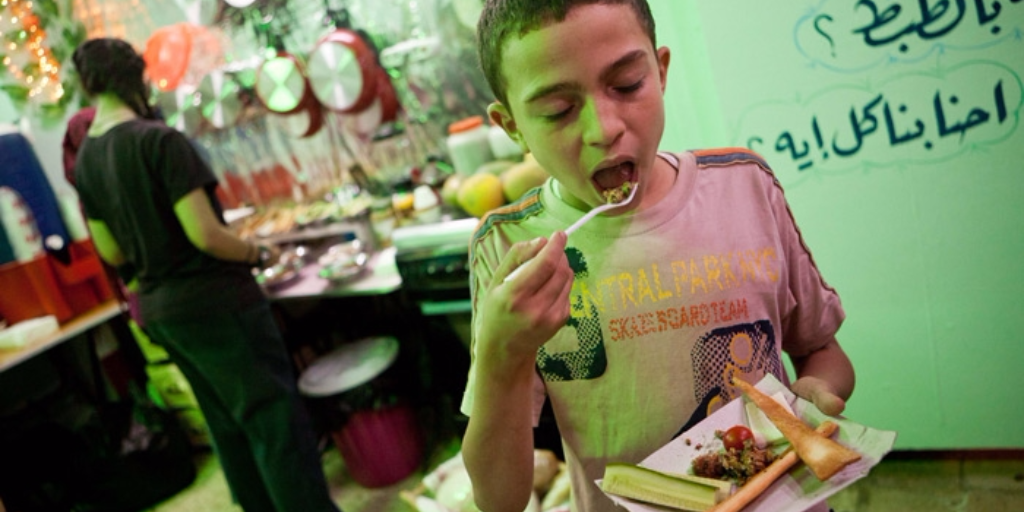



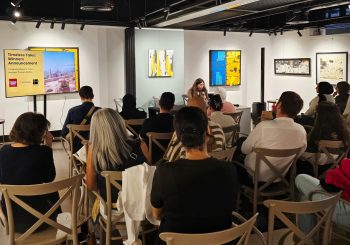
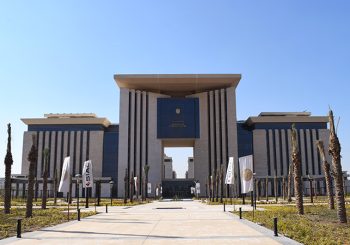

Comments (0)